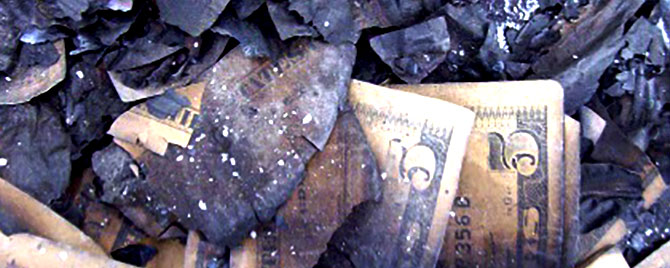It’s illegal to destroy United States Federal Reserve Notes, but sometimes accidents do happen. Luckily there are a couple convenient ways to trade your damaged cash for notes that are in better shape.
The extent of a note’s damage determines where to bring it.
Does the note have a tear? Is it worn out? Just really, really filthy? These notes are considered “unfit” and you can exchange them at any commercial bank.
A “mutilated” note is a bit different. Cash that’s been through a fire or flood, or chewed up by animals usually fall into this category. A few ways to tell if cash is mutilated and not just unfit:
- A big chunk is missing (less than 50% of the note remains)
- Value is unclear
- Security features like the portrait watermark or security thread are missing
Good news is, genuine U.S. currency may still be worth face value, but it needs to be examined by the Bureau of Engraving and Printing (BEP) for authenticity before redemption.
For a visual guide to mutilated currency and redemption guidelines, visit the Mutilated Currency 101 infographic developed by the San Francisco Fed, Federal Reserve National Cash Product Office, and BEP.
You may also be interested in:
The views expressed here do not necessarily reflect the views of the management of the Federal Reserve Bank of San Francisco or of the Board of Governors of the Federal Reserve System.
